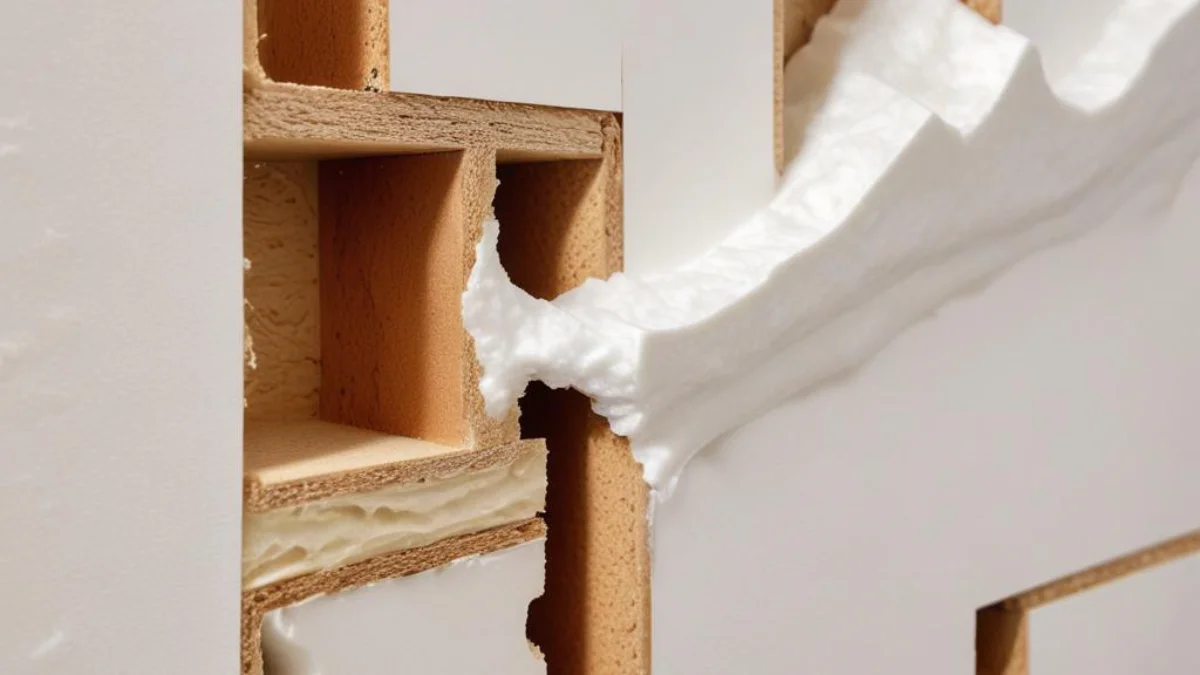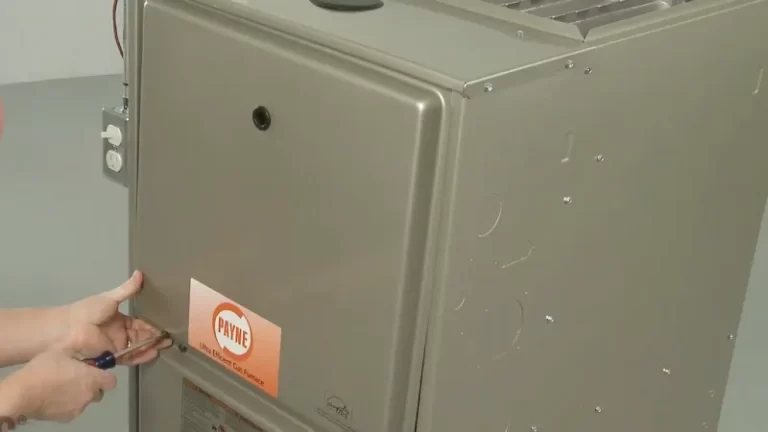USA Premium Foam Insulation Reviews: Better than Spray Foam?
Skyrocketing energy bills and rooms that are impossible to keep comfortable are common frustrations for homeowners. You diligently adjust the thermostat, seal drafty windows, and yet, your home’s internal climate remains stubbornly hot in the summer and chilly in the winter. This relentless battle against the elements often points to a significant, yet unseen, culprit: inadequate wall insulation.
Many homes, especially those built before modern energy codes, lack sufficient insulation in their wall cavities. This deficiency allows expensive heated or cooled air to escape, forcing your HVAC system to work overtime and driving up your utility costs. The problem lies hidden within your walls, making it a challenging issue to address without disruptive and costly renovations.
USA Premium Foam Insulation emerges as a potential solution to this widespread problem. It is an injection foam designed specifically for existing homes, promising to fill these empty wall cavities without the need for tearing down drywall. But with a higher price tag than traditional options, many homeowners are left wondering if the investment truly pays off. This article delves into USA Premium Foam Insulation reviews, its costs, and its performance to help you determine if it’s the right choice for your home.

You'll Learn About
Understanding USA Premium Foam Insulation
USA Premium Foam is a proprietary injection foam insulation. Unlike spray foam, which is applied to open cavities during new construction, injection foam is designed for retrofitting existing, closed-off walls. The installation process is minimally invasive; technicians typically drill small holes from the exterior of the home, inject the foam, and then patch the holes.
The foam itself has a consistency similar to shaving cream when injected. It flows to fill the entire wall cavity, sealing cracks and crevices around pipes and wiring that other insulation types might miss. Once it cures, it hardens into a solid, lightweight insulating barrier that doesn’t settle or degrade over time like some traditional insulation materials.
Key Features and Claimed Benefits
USA Insulation promotes several key benefits of their premium foam product. One of the most significant is its high R-value, which is a measure of thermal resistance. USA Premium Foam boasts an R-value of 5.1 per inch, which is considerably higher than many conventional insulation products like fiberglass and cellulose. A higher R-value means better resistance to heat flow, keeping your home warmer in the winter and cooler in the summer.
Another major advantage is the creation of an air seal. By filling every nook and cranny, the foam helps to stop air leakage, which is a major source of energy loss in homes. The company also highlights its product’s non-toxic nature, Class A fire rating, and its ability to reduce outside noise, creating a quieter indoor environment.
The Cost Factor: A Major Consideration
There’s no denying that USA Premium Foam Insulation comes at a higher initial cost compared to other retrofit insulation options like blown-in cellulose or fiberglass. The price can be two to three times more expensive. This significant price difference is a primary concern for many homeowners and a recurring topic in online discussions and reviews.
Several factors influence the final cost, including the size and number of stories of your home, the type of exterior siding, and your geographic location. While the upfront investment is higher, the company and many proponents argue that the long-term energy savings can offset this initial expense. Improved energy efficiency can lead to substantially lower monthly utility bills, offering a return on investment over time.
Comparing Insulation Types
To put the cost and performance into perspective, it’s helpful to compare USA Premium Foam with other common insulation materials. While some alternatives might be cheaper initially, they may not offer the same level of performance, particularly when it comes to air sealing.
For homeowners debating between different types of insulation, understanding the nuances is key. For example, when considering faced or unfaced insulation behind a shower, moisture resistance becomes a critical factor, a property where closed-cell foams excel. The question of why spray foam insulation is so expensive often comes down to its superior performance in both R-value and air sealing, similar to the value proposition of injection foam.
| Insulation Type | Typical R-Value (per inch) | Pros | Cons |
|---|---|---|---|
| USA Premium Foam | 5.1 | High R-value, excellent air sealing, noise reduction, professional installation. | Higher initial cost, requires professional installation. |
| Blown-in Cellulose | 3.2 – 3.8 | Lower cost, made from recycled materials. | Can settle over time, lower R-value, susceptible to moisture. |
| Blown-in Fiberglass | 2.2 – 2.7 | Lower cost, naturally moisture resistant. | Lower R-value, can settle, potential for air gaps. |
| Closed-Cell Spray Foam | 6.0 – 7.0 | Highest R-value, strong air and moisture barrier, adds structural rigidity. | Most expensive, typically for open cavities/new construction. |
Real Homeowner Reviews and Common Pain Points
A deep dive into online forums, review sites, and BBB complaints reveals a mixed bag of experiences with USA Premium Foam Insulation. Many customers report high levels of satisfaction, citing noticeable improvements in home comfort and significant reductions in their energy bills. Positive reviews frequently praise the professional and clean installation process and the immediate sound-dampening effects.
However, negative reviews and complaints also surface, often centering on a few key issues. Some homeowners have reported that the insulation did not perform as expected, with little to no change in their utility costs. Improper installation appears to be a common thread in these negative experiences. If the foam is not injected correctly or if it fails to fill the entire cavity, its effectiveness is drastically reduced. In some cases, customers have discovered that the foam did not properly navigate around existing insulation like fiberglass, leaving significant gaps.
Potential Problems and How to Avoid Them
One of the primary concerns with any foam insulation is the potential for moisture issues. If not installed correctly, foam insulation can trap moisture, potentially leading to mold or rot. It is crucial that the installation is performed by well-trained technicians who understand the building science behind proper insulation and ventilation.
To avoid potential problems, it is essential to vet your local USA Insulation franchise thoroughly. Ask for references, check their BBB rating and reviews, and ensure they have a long track record of successful installations in your area. During the consultation, ask specific questions about how they handle existing insulation and how they ensure a complete fill of the wall cavities.
What is the most expensive type of insulation?
When it comes to insulating your home or commercial building, one of the most significant decisions you’ll make is which type of insulation to choose. Among the many options available, spray foam insulation stands out as the most expensive choice. However, despite its higher upfront cost, spray foam insulation offers numerous benefits that can make it well worth the investment. In this article, we’ll explore why spray foam insulation, particularly closed-cell spray foam, can be a smart choice for homeowners looking for long-term energy efficiency, durability, and comfort.
What Is Spray Foam Insulation?
Spray foam insulation is a liquid insulation material that is sprayed onto surfaces where it expands into a foam. It hardens to create an airtight, highly efficient barrier against heat loss, air infiltration, and moisture. There are two primary types of spray foam: open-cell and closed-cell. Closed-cell spray foam is denser, provides better insulation values, and offers greater moisture resistance, making it the more expensive option.
Benefits of Spray Foam Insulation
-
Superior Insulation Value (R-Value)
-
Spray foam insulation provides one of the highest R-values per inch of any insulation material. Closed-cell foam offers an R-value of around 6.5 per inch, while open-cell foam offers approximately R-3.7 per inch. This means that spray foam insulation is incredibly effective at reducing heat transfer, helping to keep your home warmer in winter and cooler in summer.
-
-
Air and Moisture Barrier
-
One of the standout features of spray foam insulation is its ability to create an airtight seal. This prevents air leaks, which are a major source of heat loss. As air leaks are minimized, your HVAC system doesn’t need to work as hard, leading to energy savings.
-
Closed-cell foam also acts as a moisture barrier, preventing water from seeping into the building’s structure. This makes it particularly useful in areas prone to high humidity, such as basements and crawlspaces.
-
-
Durability and Longevity
-
Spray foam insulation, especially closed-cell foam, is incredibly durable. It doesn’t sag, settle, or degrade over time, unlike traditional insulation materials such as fiberglass or cellulose. Once installed, spray foam can last for the life of the building, requiring little to no maintenance.
-
-
Increased Structural Integrity
-
Closed-cell spray foam can increase the structural integrity of your home. The rigid nature of the foam adds strength to walls and roofs, which can be particularly beneficial in areas with severe weather conditions such as high winds or heavy snow.
-
-
Noise Reduction
-
Spray foam also offers excellent soundproofing qualities. Open-cell foam, in particular, is effective at reducing noise transmission, making it ideal for spaces where soundproofing is a priority, such as bedrooms, home theaters, or offices.
-
Why It’s Worth the Investment
While the initial cost of spray foam insulation is higher than traditional materials like fiberglass or cellulose, the long-term benefits can outweigh this upfront investment. Here’s why:
-
Energy Savings
-
Spray foam’s superior insulating properties can drastically reduce heating and cooling costs by up to 50%. By minimizing energy loss through drafts and gaps, you’ll spend less on utilities each month, which can offset the higher installation cost in just a few years.
-
-
Tax Incentives and Rebates
-
In many regions, homeowners who upgrade to energy-efficient insulation like spray foam may be eligible for tax incentives, rebates, or grants. These financial incentives can help reduce the cost of installation.
-
-
Increased Home Value
-
Homes with energy-efficient features, including spray foam insulation, are often more attractive to potential buyers. Energy-efficient homes can command higher sale prices and tend to sell faster on the market.
-
Is It Worth the Price? The Final Verdict
Ultimately, whether USA Premium Foam Insulation is worth the price depends on your specific situation, priorities, and budget. If your primary goal is to achieve the highest possible energy efficiency and you are willing to make a significant upfront investment for long-term savings, it can be an excellent choice. The combination of a high R-value and superior air sealing can deliver a level of performance that traditional retrofit options struggle to match.
For those on a tighter budget, exploring options like dense-pack cellulose might be more practical. While it may not offer the same performance as injection foam, it can still provide a substantial improvement over uninsulated walls at a much lower cost. It’s also worth noting that in the world of home materials, brand comparisons are always wise, much like when choosing between Malibu Wide Plank vs. Lifeproof flooring—performance and cost vary.
The key to a successful outcome with USA Premium Foam lies in the quality of the installation. A flawless product can fail if installed improperly. Therefore, your decision should not only be about the product itself but also about the expertise and reputation of the installers in your area. A well-executed installation can lead to a more comfortable, quieter, and energy-efficient home, making the investment a worthwhile one for years to come.

